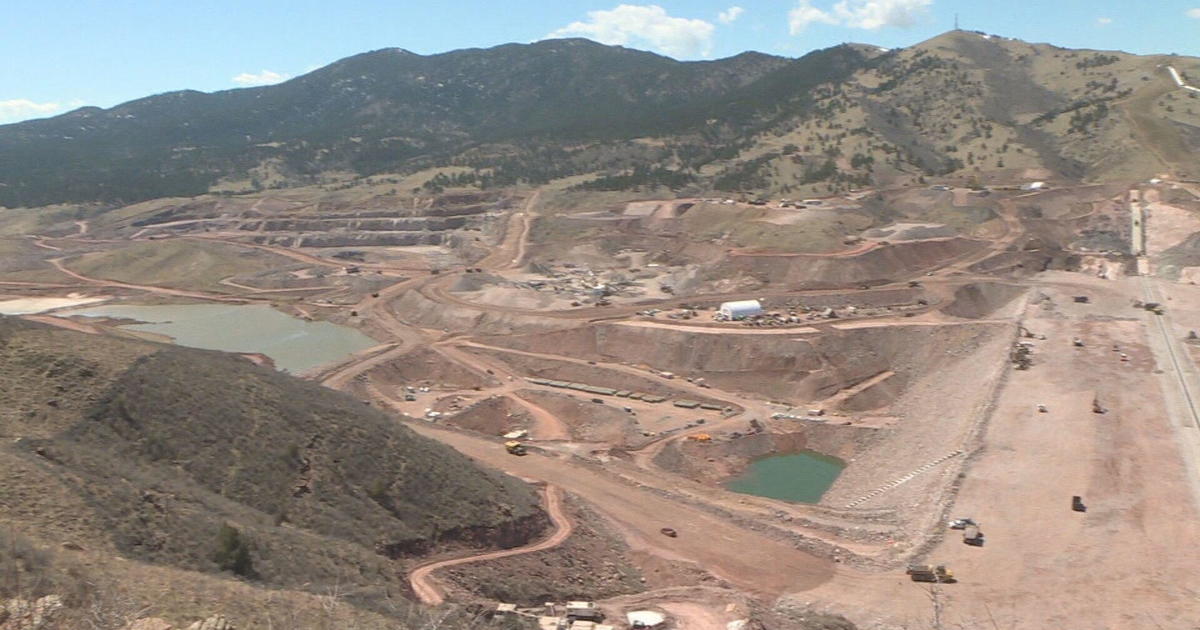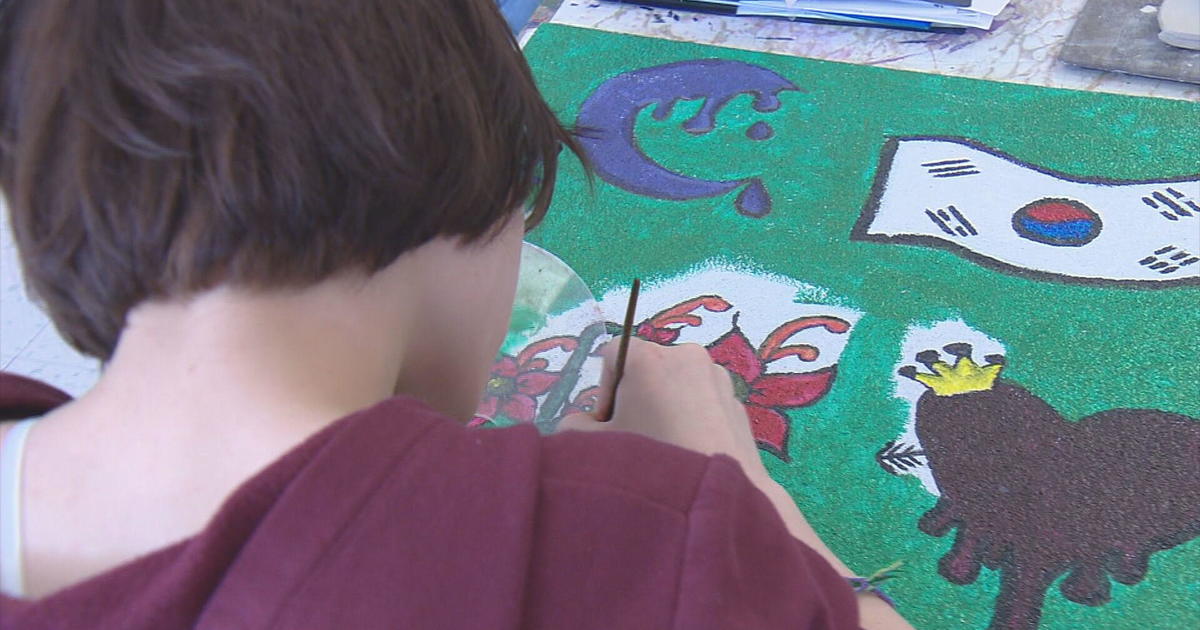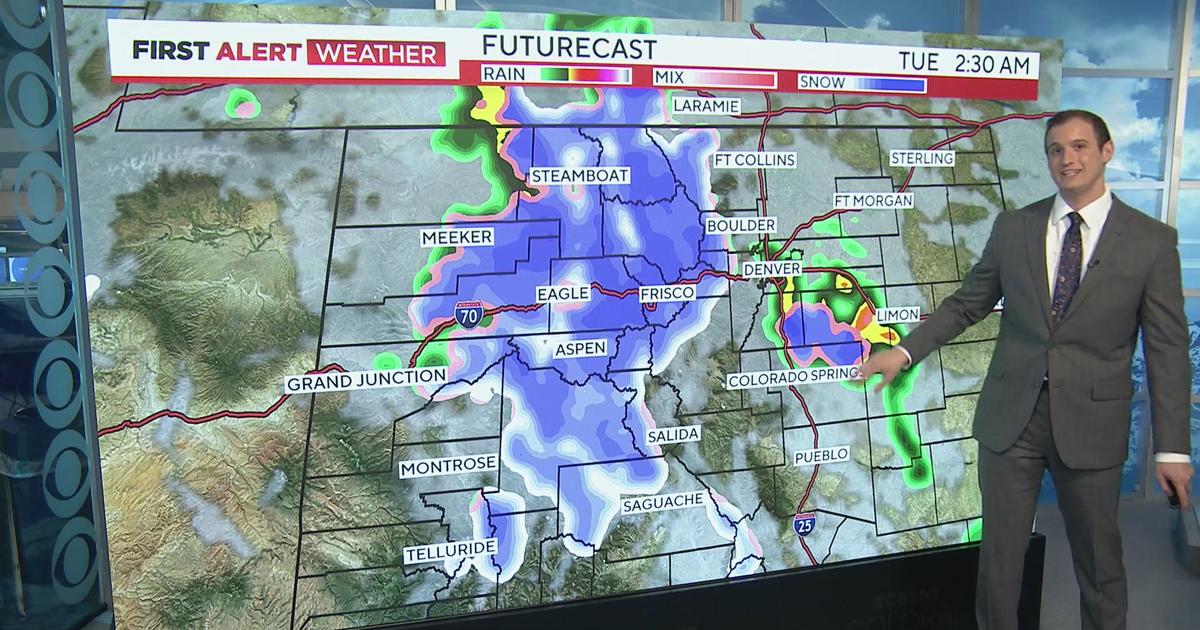Western Wildfire Recovery Likely To Take Years
DENVER (AP) - A once-thriving Colorado neighborhood of homes and healthy trees has been reduced to a barren expanse of ash and debris. Across the state, a river prized for its trout, rapids and pristine water instead flows as an oily, black brew every time rain falls on nearby slopes charred by wildfire.
In New Mexico, the Santa Clara Pueblo is seeking volunteers to fill sandbags for fear the American Indian village of 3,100 will be washed away by runoff from mountainsides left denuded by a blaze last year.
Wildfires across the West are burning homes, businesses, bridges and other infrastructure necessary for everyday life - and the disaster isn't over when the wildfire is snuffed out and the firefighters go home.
Erosion from seared hillsides buries roads in mud and pollutes rivers that supply tap water. The point was driven home earlier this week when a mudslide following heavy rain in Colorado's Waldo Canyon burn area temporarily closed U.S. 24 near Manitou Springs.
Electricity, water and gas lines have to be repaired and recharged. Debris from burned-out homes has to be hauled away and new houses must be built. Even if the work starts while the fire is still burning, experts say recovery can take years and untold millions of dollars simply to make conditions livable again.
Lisa Maser, whose northern Colorado home survived a blaze that destroyed 259 homes and charred more than 136 square miles, now thinks of her life in two periods: before and after the High Park Fire.
"It's very eerie," Maser said of the charred hillsides in her rural neighborhood west of Fort Collins, where the blaze left a layer of fine, sandy black ash, and where flood waters could strand them in the event of a heavy rainstorm. "It's amazing that it got so close."
In Colorado alone, insurers estimate that wildfires have caused some $450 million in damage to personal property, and that number is expected to grow.
Nationally, the U.S. Forest Service is on track for another possible record with nearly $28 million spent so far on burned-area recovery work. The agency spent a record $48 million last year.
Harris Sherman, the USDA undersecretary who oversees the agency and the Natural Resources Conservation Service, said the federal government tries to get into burned areas as quickly as possible to predict what some of the fallout might be.
"There are not only immediate effects. There are long-term implications to this," Sherman said. "We all need to be aware of the fact that the landscape doesn't restore overnight. It can take years, if not decades."
The number of fires and total acreage burned in the West this summer is roughly within range of the past decade's average. But the fires are bigger, they're burning with greater severity, and they are burning areas where the potential impacts are greater.
The blazes have charred forests and private land near suburban communities, rather than remote wilderness, raising the price tag for a recovery that challenges everyone from homeowners and anglers to forest managers and water plant operators.
In addition to Colorado and New Mexico, burned-area response specialists are working in Arizona, Nevada, Utah and Wyoming to finalize contracts for seeding and mulching, stabilize roads and trails, prep culverts for higher flows of water and put up warning signs.
Charred hillsides are vulnerable to erosion during downpours because they have less vegetation to soak up rain, increasing the likelihood of flooding.
Earlier this month, a wall of water rushed down New Mexico's Santa Clara Canyon, washing away months of restoration work done by Santa Clara Pueblo and government contractors. The tribal community had volunteers come from around the state to help fill thousands of sandbags in the wake of last year's massive Las Conchas Fire, and they're in need of the same help this year.
Pueblo Gov. Walter Dasheno has said he fears the next rainstorm could result in a wall of water bearing down on his village.
"In less than 10 days, the rains have wiped out even more trees, brought down more boulders and destroyed some out structures," he said.
National forests and grasslands provide about 20 percent of the nation's water supply, according to the Forest Service, and the cost of treating drinking water increases by about 20 percent for every loss of 10 percent of forest land in a watershed.
Following wildfires in 1996 and 2002, the water utility in Denver spent more than $26 million on restoration, maintenance and dredging, planting more than a quarter of a million trees, building sediment control structures and installing bigger drainage pipes.
The work reinforced the utility's belief in the importance of forest management, Denver Water media coordinator Travis Thompson said.
In 2010, Denver Water entered into a partnership with the Forest Service, called "From Forests to Faucets," to improve forest and watershed conditions. Under the partnership, Denver Water will match the federal government's $16.5 million investment toward restoration projects in priority watersheds critical to Denver's water supply.
An estimated 30,000 cubic yards of debris are expected to be hauled out of one neighborhood near Colorado Springs, where the Waldo Canyon Fire destroyed more than 340 homes and killed a husband and wife.
But the rebuilding process has already begun: Earlier this week, city officials issued the first permit for a homeowner to rebuild, just 14 days after the fire was declared contained.
Joseph Boyd, whose two-story, four-bedroom home at the end of a cul-de-sac burned on June 26, said he looked at other homes but found nothing that appealed to him and his wife. They've since picked out a new, more energy-efficient plan and aim to restore the landscape.
At least eight of the 14 houses on his street intend to return and rebuild, he said.
"I have one neighbor that will not come back. It was pretty traumatizing for them," he said. "I don't blame them, but it's a memory that will fade. You have to move forward, either direction you choose."
- By Dan Elliott, AP Writer
Montoya Brian reported from Albuquerque, N.M. Associated Press writer Shannon Dininny contributed to this story from Yakima, Wash.
(© Copyright 2012 The Associated Press. All Rights Reserved. This material may not be published, broadcast, rewritten or redistributed.)
Wildfire Resources
- Visit CBSDenver.com's Wildfire Resources section.
- Read recent Wildfire stories.
Wildfire Photo Galleries
- See images from the most destructive wildfires (Waldo Canyon, High Park and Fourmile) and largest wildfire (Hayman) in Colorado history.



